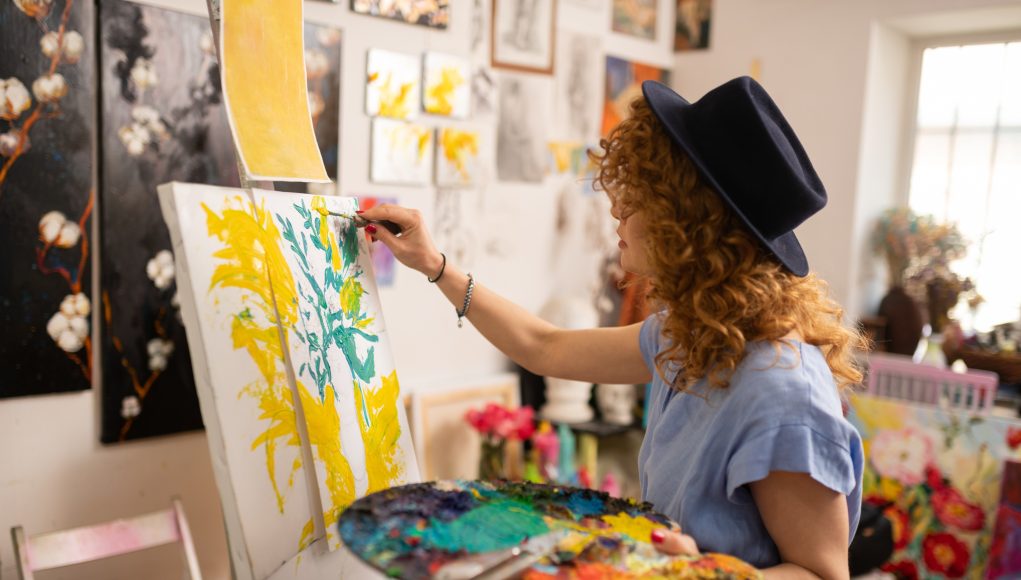In today’s fast-evolving world, creativity is no longer just an option – it’s the key to survival and success.
As industries face unprecedented disruptions caused by artificial intelligence (AI), human ingenuity takes center stage, acting as the competitive differentiator that allows businesses to thrive amid complexity.
AI transforms how companies operate, automate, and innovate, but it lacks one thing that humans excel at – the ability to think creatively, solve problems intuitively, and connect with others empathetically.
This article explores why creativity is vital for businesses in the age of AI and how companies can leverage it to remain competitive, drive innovation, and turn disruptions into opportunities.
What does creativity in business mean today?
Creativity in business goes beyond generating ideas – it’s about turning ideas into actionable solutions that generate value.
In today’s AI-centric environment, creativity often involves rethinking existing processes, finding unique applications for emerging technologies, and solving problems in ways that technology alone cannot.
This dynamic approach ensures organizations stay adaptable, innovative, and relevant. Creativity in business also empowers employees to go beyond their job descriptions, tapping into their full potential to develop ground-breaking strategies, products, and services.
When companies integrate creativity into their culture, they create an environment where innovation thrives, collaboration flourishes, and growth becomes inevitable. It’s about blending human insight with cutting-edge tools to achieve results that are not just efficient but extraordinary.
Why is creativity more important than ever in the age of AI?
AI has redefined the pace and nature of business, making creativity more crucial than ever before.
As AI takes over repetitive tasks and streamlines operations, companies must tap into human creativity to interpret insights, identify new opportunities, and maintain a competitive edge.
AI excels at finding patterns, analyzing data, and automating workflows, but it cannot replicate human traits like intuition, emotional intelligence, and vision. This makes creativity indispensable in developing strategies that balance the efficiency of AI with the empathy and foresight of human input.
Here’s why creativity is a driving force in this new era:
- Adaptability: In a world where change is the only constant, creative thinking allows businesses to pivot quickly and explore uncharted opportunities.
- Competitive Edge: AI technology is widely accessible, but creative application of AI determines how well a company stands out in its industry.
- Innovation Acceleration: Combining AI’s capabilities with human imagination leads to innovations that redefine industries, improve customer experiences, and create entirely new markets.
Organizations that fail to prioritize creativity risk stagnation in an environment that demands bold ideas and visionary approaches.
What are the benefits of fostering creativity in business?
When companies foster a culture of creativity, they unlock a multitude of benefits that set them apart from their competition.
First and foremost, creativity fuels problem-solving. Employees who are encouraged to think outside the box can identify and address challenges in innovative ways, often discovering solutions that reduce costs, enhance efficiency, or improve customer satisfaction. For instance, a creative approach to logistics might uncover a method to cut delivery times in half while also reducing environmental impact.
Second, creativity drives market differentiation. In a crowded marketplace, creative ideas can transform a company’s products, services, or branding, allowing it to stand out. When competitors are focused solely on efficiency, businesses that emphasize creativity often gain a loyal customer base by offering something truly unique.
Lastly, fostering creativity boosts employee engagement and retention. When individuals feel their ideas are valued and their contributions matter, they’re more motivated and productive. This translates into a workplace where innovation is a shared goal, and employees are deeply invested in the organization’s success.
How are companies using creativity to drive AI adoption?
The most successful companies don’t just adopt AI – they use creativity to amplify AI’s potential. This combination of creativity and technology allows businesses to reimagine customer experiences, optimize internal processes, and drive growth.
Consider the following examples:
- Tesla’s personalized driver experience: Tesla creatively integrates AI to customize in-car settings, offering features like adaptive driving modes based on a user’s habits and preferences. This approach not only enhances the driving experience but also builds stronger customer loyalty by making each interaction feel personal.
- Coca-Cola’s AI-powered content creation: Coca-Cola leverages generative AI to create marketing campaigns tailored to regional audiences. By combining AI insights with human creativity, the company designs campaigns that resonate deeply with diverse customer bases, ensuring relevancy in an increasingly globalized market.
These examples illustrate how creative thinking is essential for turning AI from a tool into a transformative force that delivers measurable value.
How does creativity drive marketing and product innovation?
In the field of marketing and product development, creativity is the engine of innovation.
While AI provides valuable data and insights, it’s the human ability to interpret this information and transform it into compelling campaigns or revolutionary products that creates lasting impact.
Take personalization, for example. AI can analyze customer data and segment audiences, but it takes creative vision to craft stories, design products, or develop services that connect emotionally with those audiences. The result? Enhanced customer loyalty and a deeper sense of brand authenticity.
Creativity also drives experimentation. AI can offer rapid feedback on marketing campaigns or prototypes, but creative teams must analyze that feedback and iterate in ways that push boundaries. This synergy ensures that companies remain agile and forward-thinking in their strategies.
How can organizations foster creativity in an AI-driven world?
Building a culture of creativity requires intentional effort and the right strategies. Successful organizations understand that creativity doesn’t occur in isolation – it thrives in environments that encourage collaboration, learning, and experimentation.
Here are some key ways businesses can foster creativity:
- Encourage experimentation: Innovative companies like Google allow employees to dedicate time to passion projects, which often result in breakthrough ideas. This freedom to explore unlocks creativity in unexpected ways.
- Promote cross-functional collaboration: Bringing together individuals with diverse skill sets and perspectives—like marketers working alongside data scientists—leads to unique solutions that neither group could achieve alone.
- Invest in continuous learning: The rapid evolution of AI demands a workforce that is both creative and adaptable. Providing ongoing education ensures employees remain ahead of the curve and equipped to innovate.
By implementing these strategies, companies can cultivate a workforce that blends creativity with cutting-edge technology, setting the stage for sustained growth and success.
How is AI reshaping the future of creative work?
AI isn’t replacing creativity – it’s enhancing it.
By automating mundane tasks, AI frees up employees to focus on high-value activities that require original thought, emotional intelligence, and strategic vision.
For example, AI-driven tools can handle data analysis, leaving marketers free to brainstorm campaigns that resonate emotionally with audiences. Similarly, AI can optimize manufacturing processes, allowing engineers to innovate new product designs that address unmet customer needs.
In this way, AI serves as a catalyst for creative work, enabling teams to achieve more with fewer resources and in less time.
What can we learn from creative business leaders?
Leaders like Steve Jobs and Richard Branson remind us that creativity is the foundation of ground-breaking innovation.
- Steve Jobs redefined industries by merging art and technology, creating products like the iPhone that were not only functional but also emotionally resonant. His ability to anticipate trends and think creatively set Apple apart from competitors.
- Richard Branson disrupted entire industries by taking bold, creative risks with ventures like Virgin Airlines and Virgin Galactic. His willingness to explore unconventional ideas made Virgin a global icon of innovation.
These leaders demonstrate how creative thinking, when applied strategically, can drive lasting success and transformation.
How can creativity turn disruption into opportunity?
Disruption is inevitable, but creativity allows businesses to harness it for growth. By identifying Hard Trends – those changes we know are coming – and Soft Trends – those we can influence – companies can proactively shape their futures.
To turn disruption into an advantage:
- Leverage Hard Trends: Recognize inevitable changes, such as AI’s growing role in customer service, and find ways to integrate them creatively.
- Pre-solve problems: Anticipate challenges before they arise and develop solutions that keep your organization ahead of the curve.
- Be both agile and Anticipatory: While agility enables quick reactions, anticipation allows businesses to lead with confidence and purpose.
Creativity: the Ultimate Competitive Advantage
In an AI-driven world, creativity isn’t just a differentiator – it’s the cornerstone of future success. By fostering a culture that blends creative thinking with technological innovation, organizations can thrive amid disruption, redefine their industries, and achieve sustained growth.
Now is the time to embrace creativity, anticipate change, and lead with confidence. Whether through innovative marketing, transformative product design, or visionary leadership, creativity ensures your business remains a step ahead.
Ready to future-proof your organization?
If you’re looking to inspire your team to innovate and lead in an AI-driven world, Daniel Burrus can help. As a globally recognized futurist and keynote speaker, he empowers organizations to anticipate change, embrace creativity, and turn disruption into opportunity.
Learn more: Daniel Burrus – Futurist Keynote Speaker.
For more life-changing opportunities and tips on entrepreneurship, subscribe to our weekly newsletter and follow us on X, Facebook, Instagram, and LinkedIn.







![The 15 best finance websites you should bookmark right now [2025 Edition] alphagamma The 15 best finance websites you should bookmark right now [2025 Edition] entrepreneurship finance opportunities](https://agcdn-1d97e.kxcdn.com/wp-content/uploads/2024/09/alphagamma-The-15-best-finance-websites-you-should-bookmark-right-now-2025-Edition-entrepreneurship-finance-opportunities-300x350.jpg)
Thanks for another insightful article, Daniel. Keep up the aamazing work!
Thanks for another amazing publication, Daniel! I’ve been following you for almost a year now. 🙂
A question for you: how far do you think the AI development is in terms of being on par with human intelligence?
– Raphael